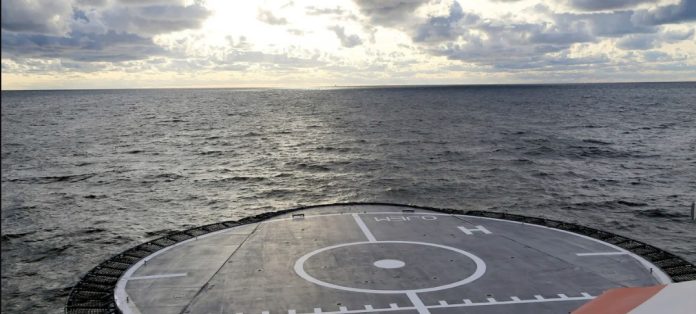Damage to an undersea gas pipeline that links Finland to the rest of Europe will leave the country struggling to secure supplies ahead of winter, highlighting the vulnerability of Europe’s energy infrastructure, according to POLITICO.
On Tuesday, there was a sudden drop in pressure, which could be the sign of a serious leak, causing operators to shut down the Baltic Sea Connector. This 77-km pipeline was delivering natural gas from Finland to Estonia, but supplies were often made in the opposite direction as well.
Senior Finnish officials have suggested that the pipeline may have been sabotaged, without specifying who might be responsible, but a local newspaper has already reported that Russia may be involved. A nearby undersea internet cable was damaged in the same incident.
Finnish President Sauli Niinistö said that “it is most likely that the damage to both the gas pipeline and the communication cable is the result of external activity” and promised that the cause would be determined by an international investigation. Prime Minister Petteri Orpo said that “it is important to investigate the case thoroughly and not to jump to conclusions”.
Tom Marzec-Manser, head of gas analytics at analyst firm ICIS, believes that a prolonged shutdown of the Baltic Connector will leave Finland “without energy” as winter sets in. He said:
Finland produces no gas and can only import through three routes: the Balticconnector; through a relatively new [liquefied natural gas] terminal; and a gas pipeline from Russia which hasn’t been in use since last year and isn’t an option.
To make matters worse, Finland shares its gas storage facilities with the three Baltic States – Estonia, Latvia and Lithuania – and there is only one gas storage facility between them – in Latvia. Marzec-Manser said:
If the pipeline isn’t available for the whole winter then that volume is inaccessible to Finland.
He believes the outage could also put pressure on the global LNG market as Finland tries to secure additional supplies, although given the country’s small consumption – its population is less than 6 million – this is unlikely to affect the market much.
Both Estonia and Finland are investigating the incident. There is a possibility that the breakdown was caused by an accidental anchor strike, according to Norwegian seismologists. Estonian Defense Minister Hanno Pevkur told POLITICO:
We have to understand what happened exactly, to basically rewind the time, to see what was the timeline, what happened and who could be the possible suspect,” It’s for “the investigators and experts to say and to put all the dots together.
However, the possibility of sabotage cannot be ruled out. Last September, a series of simultaneous explosions occurred on the Nord Stream pipelines, designed to transport 110 billion cubic metres of gas per year from Russia to Germany, effectively putting them out of operation, POLITICO reports.
In this case, there is no doubt in anyone’s mind that the incident was caused by sabotage. Both Russia and Ukraine have denied involvement, and the conclusions of the investigation have not yet been made public. Nevertheless, the incident was a telling example of the vulnerability of European energy networks and sparked a race to protect critical infrastructure.
Torben Brabo, president of Gas Infrastructure Europe, an association of operators, believes those responsible for protecting the energy grid from external threats are taking the issue “more than seriously”. He said:
Last year when the Ukraine crisis started, most other stakeholders became aware that security of supply was a topic that had been prioritized down politically for some years, and now it’s back on the top. There are always areas where there are blind spots — subsea pipelines, electricity cables, telecommunications, fiber cables — all of them have the same more or less level of security and all of them to some extent are compromised right now. There are a lot of things we can do: We can install sensors, we can have smart drones sailing along our pipelines. But this is a national security issue and we can’t go into details.
Philip Ingram, a former British military intelligence colonel and NATO planner, said the continent is unprepared to deal with the threat of asymmetric warfare taking place on European soil. He emphasised:
A sign of how seriously this is being taken in the UK, for example, is how they’ve created Royal Auxiliary marine survey ships, buying civilian oil rig maintenance vessels and turning them into military ones in just two years, which is extraordinarily fast for any procurements. But there are real difficulties in Europe trying to work out what the response should be, and EU countries are reluctant to admit they need to have a joint protection force in their own territorial waters.
